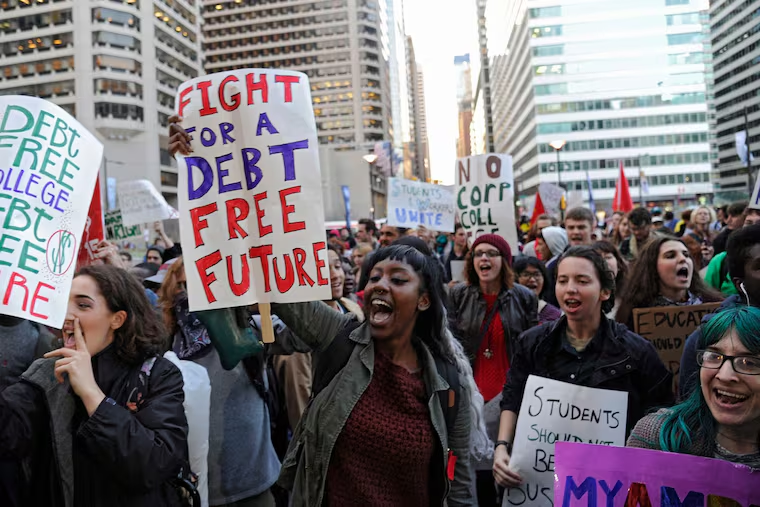The Supreme Court blocked Biden’s student loan forgiveness plan. What does that mean for borrowers?
The Supreme Court’s rejection of the Biden administration’s debt forgiveness program will affect millions of borrowers.

The U.S. Supreme Court has blocked President Joe Biden’s student loan forgiveness plan. The court released a 6-3 decision Friday shutting down the Biden administration’s plan to wipe thousands of dollars of student debt from millions of borrowers.
The one-time debt forgiveness program, which aimed to deliver up to $20,000 in relief to borrowers, was announced nearly a year ago. But the rollout was stalled by two lawsuits that went to the Supreme Court. Both challenged Biden’s ability to authorize the cancellation of student loan debt.
Here’s what you need to know.
How did we get here?
In August, Biden unveiled his plan to cancel up to $20,000 in student loan debt for borrowers across the country. The plan was meant to prioritize economically disadvantaged borrowers. Those who earned more money — up to $125,000 — stood to get $10,000 in student debt relief.
Millions were approved for loan forgiveness, with 90% earning less than $75,000, according to the White House. But legal challenges put things on pause.
One lawsuit was from six GOP-led states — Missouri, Nebraska, Iowa, Arkansas, Kansas, and South Carolina — that contended that the states faced financial harm from the plan. The other, from two Texas-based plaintiffs, said the two student loan borrowers didn’t qualify for full debt relief forgiveness and were denied the chance to comment on the plan themselves.
In both challenges, the central question was whether the Biden administration was authorized to cancel student loan debt. Biden’s office said the Higher Education Relief Opportunities for Students Act of 2003, known as the HEROES Act, gave the executive branch the ability to remove federal student loan debt in an emergency — like the COVID-19 pandemic. But opponents said it was an overreach that could cause financial harm, with $400 billion in forgiven debts.
The court held Friday that the Biden administration overstepped its authority. The conservative majority of justices said the administration would need Congress’ endorsement to move forward with the program and rejected claims that the HEROES Act negated that.
» READ MORE: The Supreme Court rejects Biden’s plan to wipe away $400 billion in student loans
Who would have benefited from the forgiveness plan in Pennsylvania?
In Pennsylvania, 1.79 million residents were eligible for student debt relief under the proposed forgiveness plan, the Department of Education estimated. Records show that 1.15 million Pennsylvanians applied or were automatically eligible and 742,300 were fully approved.
» READ MORE: In Pennsylvania, 1.15 million people signed up for Biden’s student loan forgiveness
What happens to my student loan payments now?
Now that federal student loan debt forgiveness isn’t happening, payments will pick up where they left off.
That’s because of a bill Congress passed earlier this month that required the payments to resume regardless of what the Supreme Court decided. Federal student loan payments will see interest accrue in September and be due in October. The U.S. Department of Education will remind borrowers at least 21 days before payments restart.
If you’re trying to figure out what that means for your wallet, those with federal student loans can visit StudentAid.gov to see where their loan payments stand and what they will owe each month. The Department of Education also recommends making sure your personal information is updated on the website, since things may have changed since the initial payment pause in 2020.
Is there still a way the forgiveness plan could happen?
From the beginning of discussions about how a Supreme Court ruling could affect Biden’s plan, there have also been talks of a “Plan B.”
As part of the plan, the Biden administration has discussed helping borrowers by restructuring income-driven repayment plans and overhauling “negative amortization” — when a person’s loan balance grows even though the borrower continues to make payments.
After Friday’s ruling, Biden pledged to move forward with a new approach: a plan, under the auspices of the Higher Education Act, that would reduce the threat of default if borrowers fall behind in payments over the coming year, the Associated Press reported.